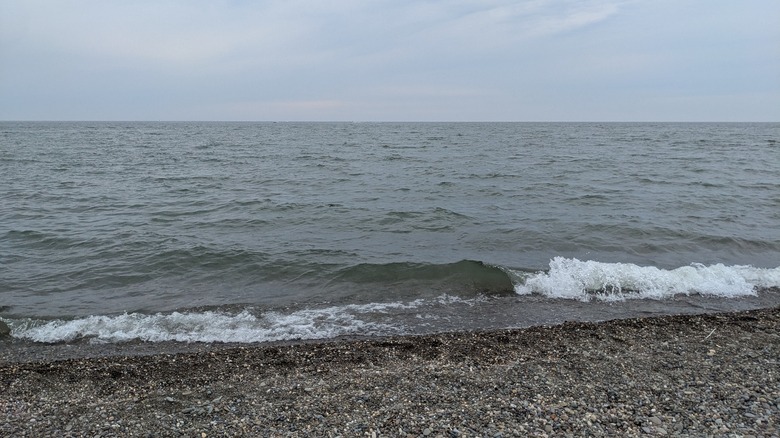One Of The Midwest's Largest Natural Sand Beaches Is An Underrated Ohio Hidden Gem
"Beach" and "Ohio" may not seem like a natural pairing; however, the state holds its own in this regard thanks to the many bodies of water within its borders. Lake Erie, where you'll find a town known as the North's Key West, stands out as the crowning jewel of Ohio's beach collection, offering more than 300 miles of shoreline to explore. For a day of fun in the sun and a chance to observe rare flora and fauna, Midwesterners know to head to Headlands Beach State Park and the connected Headlands Dunes State Nature Preserve. The former, Ohio's biggest natural sand beach, encompasses 35 acres on Lake Erie. The Great Lake rarely forms sand dunes, making the beach stand out for more than its size.
Due to its location a mere 30 miles northeast of Cleveland, Headlands makes an ideal day trip for those looking to slip away from the city and into pleasantly warm water during the summer. Or make it a Lake Erie double-feature by spending Saturday at Cedar Point, one of the U.S.' oldest amusement parks, and Sunday at Headlands. You can also visit during the winter for snowy solitude and photo opportunities. No matter the timing of your excursion, give yourself at least a few hours to properly take in the waves, boardwalk, and nearby lighthouse at this lesser-known gem.
Headlands offers swimming, beachcombing, and nature walks
Swimming is the main event at Headlands Beach State Park, especially in July, when the temperature and humidity levels tend to peak. Though known for its stretch of sand, visitors will have to pass through a thick blanket of rocks at the lake's edge that extends into the shallows. Wear quality water shoes to keep your feet safe and avoid slipping on the stones.
As rough as the rocks can be, the many interesting shapes, sizes, and colorations on display continue to draw in collectors. Headlands is also a prime spot for beach glass foraging, with green, white, brown, and other varieties hidden amongst the stones. You could come away with a sizeable haul after an hour or two of walking and digging. The abundant driftwood would also make for a memorable memento of your outing. Don't forget to take a peek (and a picture or two) at the Fairport Harbor West Breakwater Lighthouse during your ramble.
Once you've had your fill of the beach, head down the nearby hiking trail to Headlands Dunes State Nature Preserve. The habitat houses a number of rare and unique plant species uncommon in Ohio, such as sea rockets and beach peas. Birders favor the location for the array of feathered creatures that congregate there, like the piping plover and snowy owl. You may also sight a red fox or a kaleidoscope of monarch butterflies on their yearly migration.
How to safely enjoy your day at Headlands Beach State Park
Headlands Beach State Park does not have lifeguards on duty, so remain vigilant before entering and while in the water. Conditions on Lake Erie can quickly turn dangerous, with the Great Lakes Surf Rescue Project reporting that 14 people had died there during the first six months of 2024. Check if the National Weather Service has issued any warnings for rip currents or high waves. Additionally, determine whether the Ohio Department of Health has released a water quality advisory.
Multiple large waves can race towards the shore in rapid succession on Lake Erie, making it difficult to return to land if you get caught in the swell. Further, sudden drop-offs can result in unexpected changes in water depth. Consider wearing a life jacket and monitoring for the signs of rip currents provided by the Ohio Department of Natural Resources: "a channel of churning, choppy water; an area of water of a different color; a line of algae or debris moving steadily offshore; or a break in the incoming wave pattern (waves usually do not break as readily in a rip current as in adjacent water)."
Finally, parts of Lake Erie sometimes contain harmful bacteria levels, including E. coli and cyanobacteria (blue-green algae blooms). Swallowing water contaminated by E. coli can lead to an infection accompanied by digestive issues and even kidney failure. Meanwhile, you can experience symptoms like rashes and eye, nose, and throat irritation just from touching water containing cyanobacteria.


